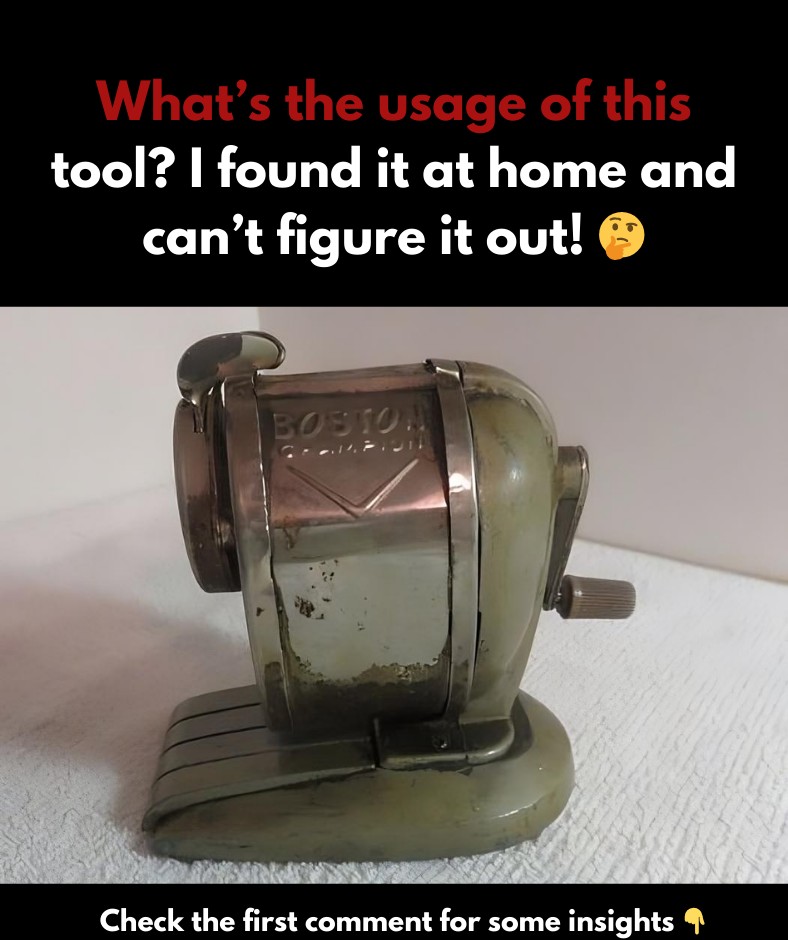Do you remember the sound of a mechanical pencil sharpener grinding away at a pencil in your classroom? The familiar clank as you adjusted it, followed by the satisfying whir of wood and graphite being ground to a perfect point—it was a daily part of school life for many of us. One such sharpener that holds a special place in our memories is the Boston Pencil Sharpener, a staple in American classrooms for decades. Let’s take a trip down memory lane and explore the history and enduring charm of this iconic classroom tool.

The Classroom Ritual: A Daily Walk to the Sharpener
If you went to school in the 80s or 90s, you probably remember the twice-daily journey to the classroom pencil sharpener. Mounted firmly to a wall or desk, often near the door, the Boston sharpener was always there when you needed it. You would select the right slot for your pencil—though most of us just used the standard size—and give it a few satisfying cranks. There was something comforting about walking back to your desk with a freshly sharpened pencil.
This ritual was more than just about sharpening a pencil; it was a shared experience among students. It offered a brief break from sitting at your desk, a moment to watch the pencil shavings accumulate in the metal compartment. Occasionally, someone would be assigned to empty the shavings tray, completing the cycle of this simple yet satisfying classroom routine.
Finding a Piece of History at Goodwill
Fast forward a few decades, and that once-ubiquitous classroom tool is now a rare find. So, you can imagine my excitement when I stumbled upon a KS-model Boston pencil sharpener at my local Goodwill. For just three dollars, I couldn’t resist the nostalgia it brought back. This particular model had eight different pencil slots and two holes at the bottom for mounting—classic features of the Boston brand.
What struck me most was how well-preserved the sharpener was. It wasn’t just a tool; it was a piece of history. Once a staple in classrooms all across America, it now sat in a thrift store, waiting to be appreciated again. I bought it not because I needed it but because it represented a simpler time—a time before electric sharpeners and mechanical pencils dominated the classroom.
The Boston Pencil Sharpener Company: A Legacy of Innovation
The Boston Pencil Sharpener Company was founded in 1899, quickly earning a reputation for its high-quality, reliable products. In 1913, they introduced the Boston Pencil Pointer, which sold for around six dollars. Back then, sharpening pencils was a tedious or costly task often done with a knife, which wasted a significant amount of lead. The Boston Pencil Pointer revolutionized the process, providing a more efficient and less wasteful solution.
As classrooms became standardized throughout the 20th century, Boston sharpeners, like the KS model, became a common fixture. These hand-cranked sharpeners featured a planetary gear system that provided smooth, even sharpening. Unlike the noisy and often unreliable electric sharpeners that would later take their place, Boston sharpeners were durable, quiet, and built to last.
A Classroom Icon: The Boston KS Model
For many of us, the Boston KS model was the quintessential classroom sharpener. It was mounted to the wall or desk, always ready for use. Its sturdy metal construction meant it could withstand the daily wear and tear of countless students. With eight pencil hole sizes, it was more than equipped for every sharpening need, though most of us simply used the standard slot.
What made the KS model special wasn’t just its reliability—it was the tactile experience of using it. Each crank of the handle brought you closer to a perfectly sharpened pencil, providing a small but real sense of accomplishment. Unlike electric sharpeners, the manual Boston sharpener offered a connection to the task that felt satisfying and deliberate.
The Transition to Mechanical Pencils and Electric Sharpeners
By the time I reached middle school in the early 2000s, classrooms began shifting. Mechanical pencils were becoming more popular, and many schools replaced their Boston sharpeners with electric models. While these electric sharpeners were faster, they also came with their own set of problems—they were loud, prone to breaking, and often disrupted the classroom. The steady, quiet cranking of the Boston sharpener was replaced by the grinding noise of an overworked electric motor.
Despite the shift to electric sharpeners, many of us still missed the simple, manual charm of the old Boston models. There was something undeniably satisfying about the process of manually sharpening a pencil—a small ritual that became a comforting part of school life.
The Evolution of the Boston Sharpener: From Hunt to X-ACTO
In 1925, the Boston Pencil Sharpener Company was acquired by Hunt Manufacturing, which continued producing the beloved sharpeners. Eventually, X-ACTO bought Hunt’s Boston sharpener line, and today, X-ACTO still produces metal, hand-cranked Boston-style sharpeners.
However, many argue that the charm and durability of the original Boston models have been lost. Modern X-ACTO versions are manufactured in China, and some enthusiasts claim that the quality just doesn’t match the originals that were made in the U.S. Despite these changes, the Boston sharpener’s legacy lives on, even if it’s not quite the same as it once was.
Conclusion: Why the Boston Pencil Sharpener Still Holds a Special Place in Our Hearts
The Boston Pencil Sharpener may seem like a relic from a bygone era, but for those of us who grew up with it, it represents much more than just a tool. It stands for a simpler time, when classroom tools were built to last and the small acts of daily life brought quiet satisfaction. The hand-cranked Boston sharpener was more than a way to sharpen a pencil—it was a part of our school routine, something that added comfort to our day.
Whether you find one in a thrift store or still have one mounted in your home, these sharpeners are reminders of those little moments that made school life memorable. The next time you come across one, give it a spin—you might just be transported back to those simpler times when a well-sharpened pencil was all you needed to conquer the day’s lessons





